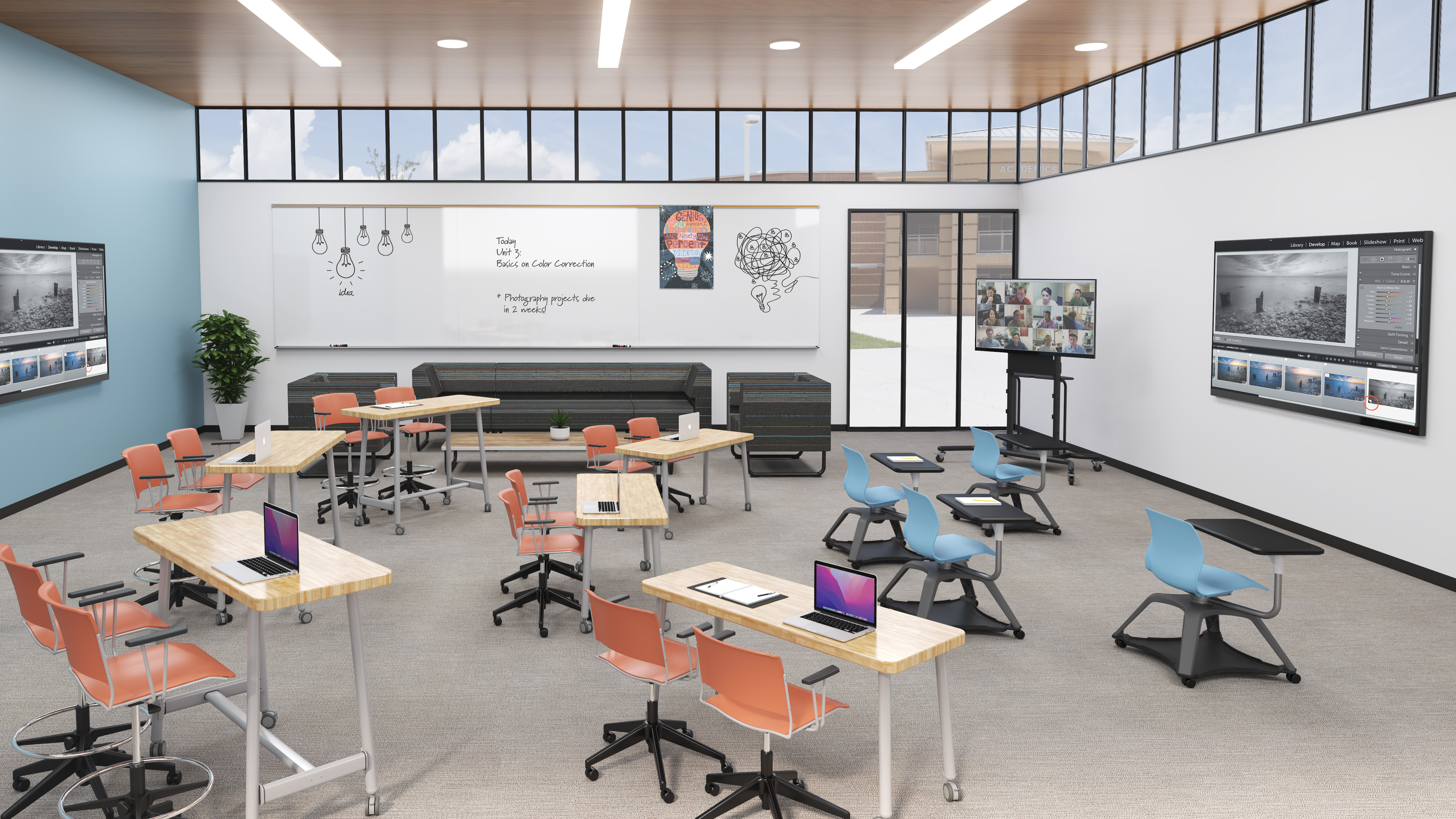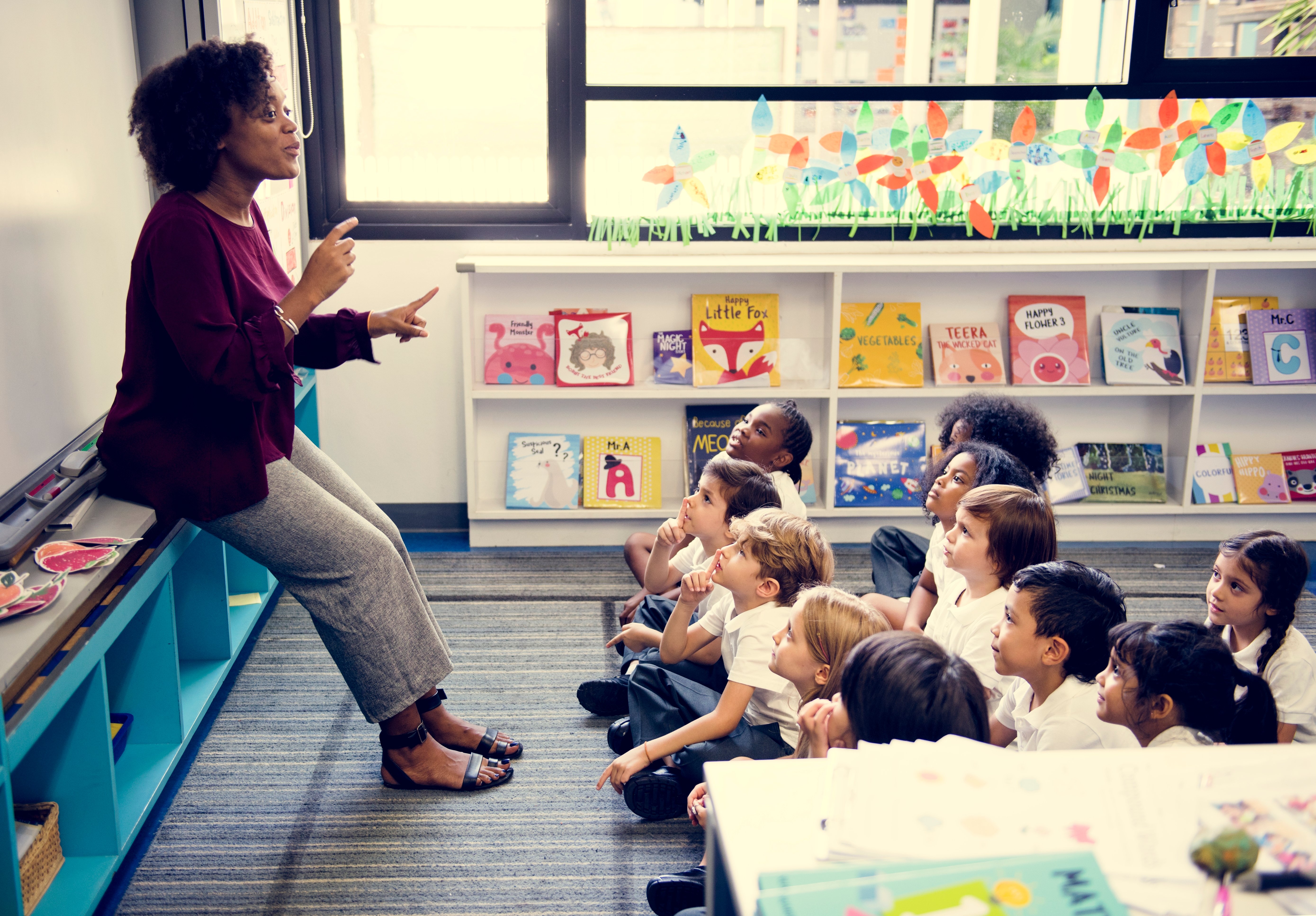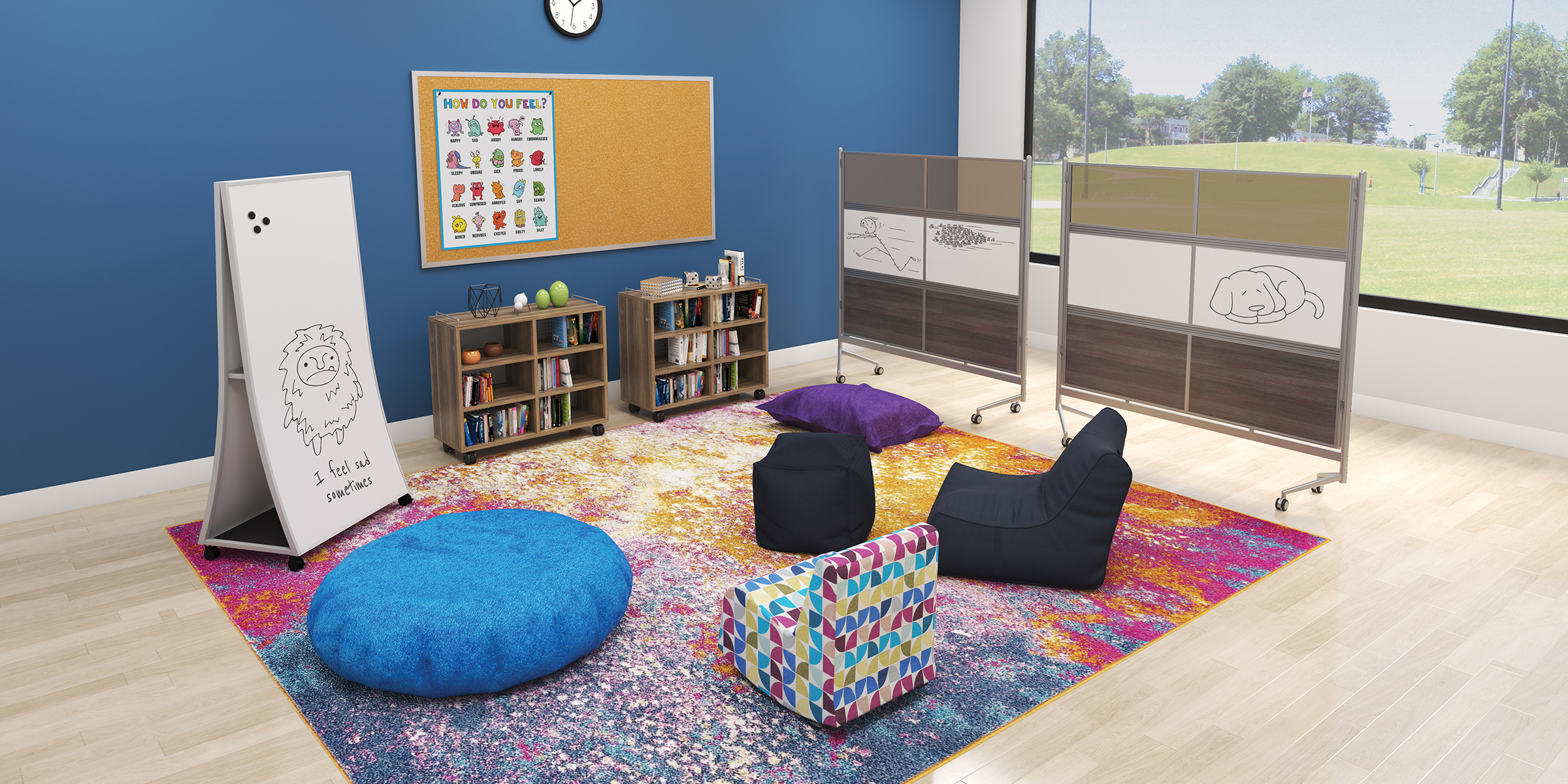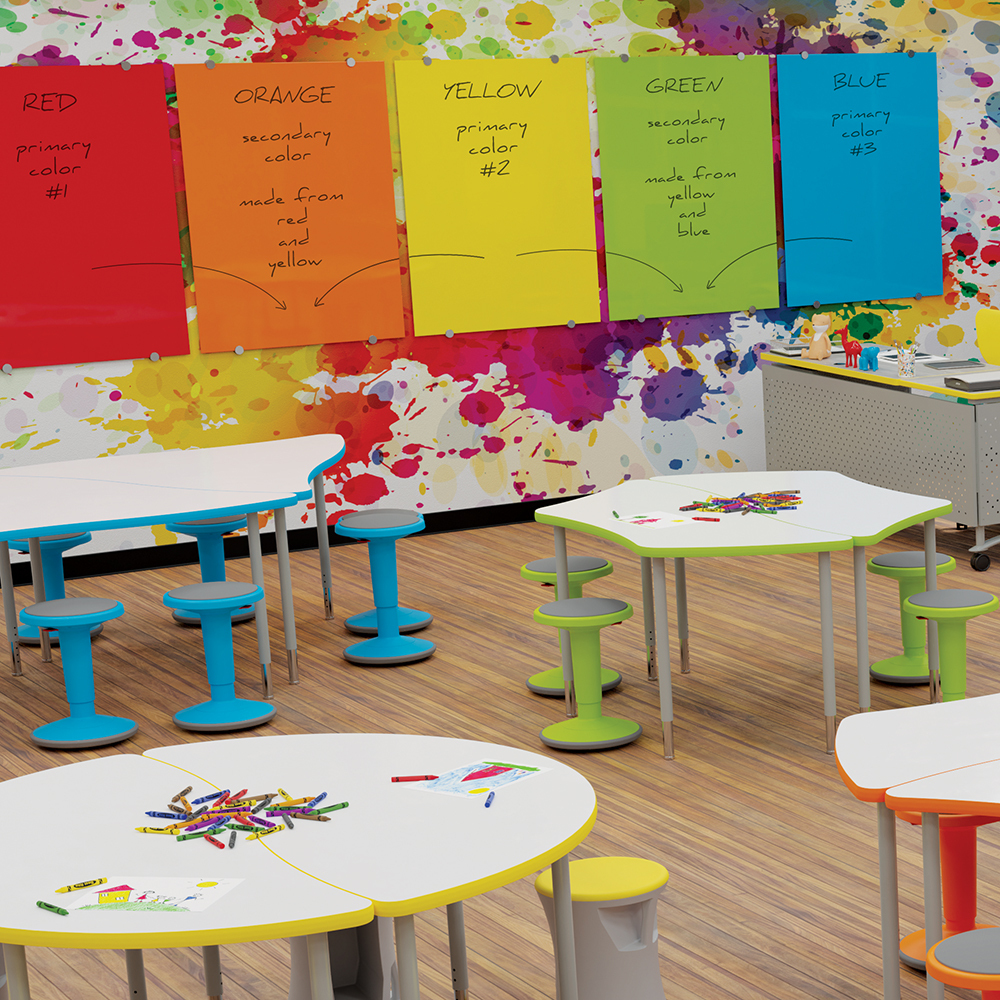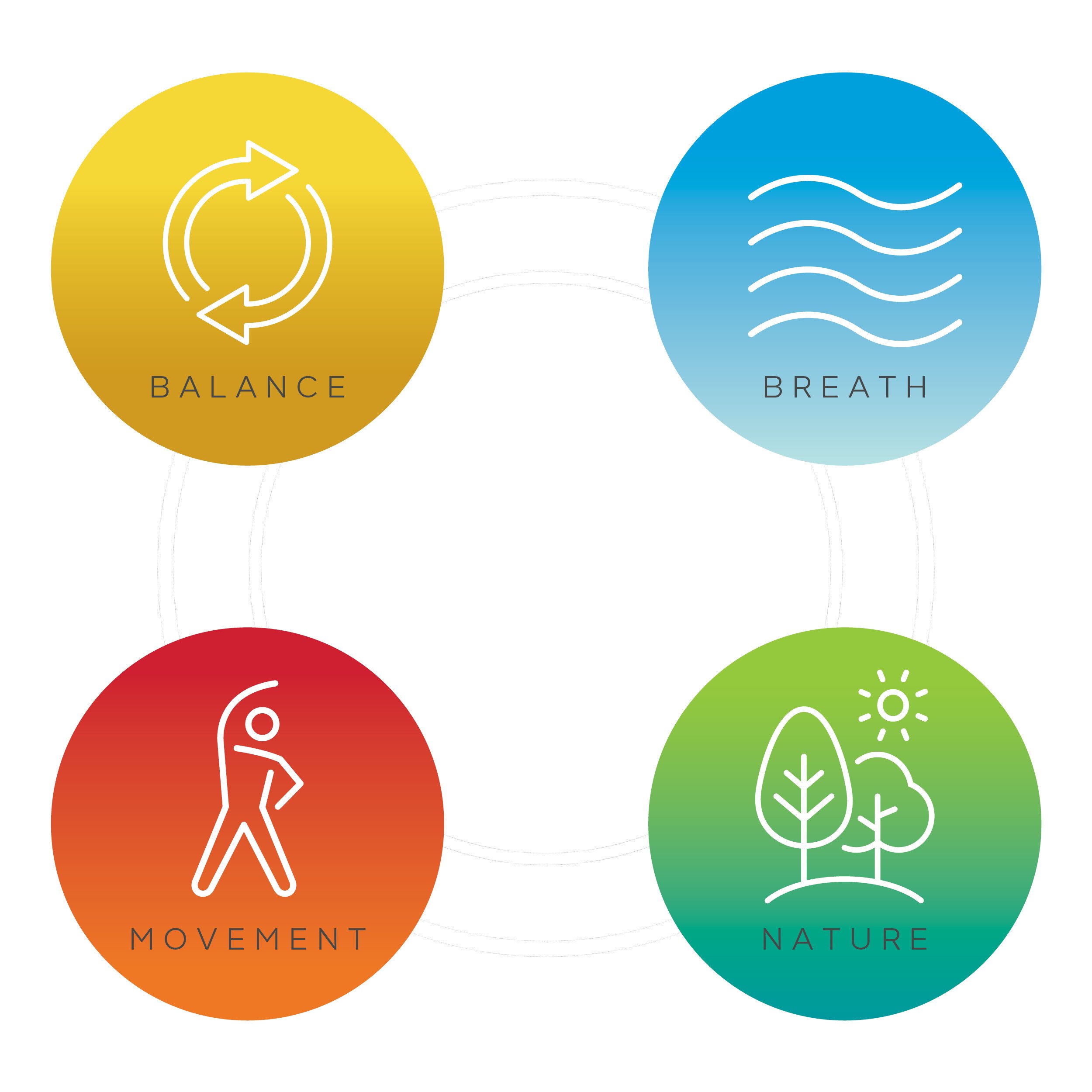How to Design Classrooms and Workspaces Based on What Gen Z Values Most
Posted by MooreCo Inc on Sep 12, 2022 1:07:45 PM
Gen Z is already famous for doing things differently. At school, empathy is popular. As they enter the workforce, they put a higher emphasis on people than profits. They form tighter and more diverse communities than ever before, primarily because their generation is the most diverse than previous ones. Workplaces and schools should also emphasize diversity, equity, and inclusion in order to appeal to Gen Z. In the wake of a global pandemic and the reality of school shootings, Gen Z is very focused on their physical and mental wellbeing. Enter Akt: a family of furniture designed in response to these needs and takes into account Gen Z’s call to action. The Akt collection was created to facilitate change, support diverse communities, and can be configured to build collaborative workspaces where Gen Z feels mentally and physically safe.
Read MoreTopics: Design, Active Classroom, Clean Living, Diversity, Equity, and Inclusion, mental health, generation z, Educators
Get to Know Gen Z: Recapping Thrive Session 1 with Mark Beal
Posted by MooreCo Inc on Sep 6, 2022 1:22:08 PM
Generation Z is emerging from a pandemic that occurred during their most formative years. Many Gen Z students were unable to attend their high school or college graduations, forced into remote education at a time when their learning journey was most essential. The result is a mixture of physical and mental health awareness, an emphasis on community, and a generation that deeply cares about the future of our world. Our Akt line of tables, chairs, and soft seating was designed intentionally to support these priorities. Gen Z expects sanitation and cleanliness post pandemic, so with this in mind, our soft seating was designed with added spacers on the seats and raised legs to make it all easy to clean. They prioritize collaboration and flexibility, which is why Akt tables were made in multiple heights with broad spaces and are easy to move. The chairs stack to easily configure and reconfigure a space with the speed that Gen Zers are used to. Whether in the classroom, the workspace, or beyond, the Akt line was designed to create active, kinetic, and tectonic spaces where Gen Z is encouraged to thrive.
Read MoreTopics: Learn from Home, Diversity, Equity, and Inclusion, MooreCo Workplace, New Products, Higher Education, generation z, Educators
How to Prioritize Social-Emotional Mental Health in the Classroom as Students Go Back to School
Posted by MooreCo Inc on Jul 26, 2022 10:52:28 AM
Students have had to undergo a seemingly endless string of stressful events over the last few years. Between an increase in school violence and a global pandemic that resulted in learning loss and cancelled social gatherings, students are under a lot of pressure to make up for lost time. That catch-up feeling has created a lot of anxiety, inequity, and isolation, so it is more important now than ever for students to know that they are not going through this alone. Prioritizing social-emotional learning and mental health as students go back to school is vital in shaping a more empathetic, inclusive, and safe classroom environment. MooreCo can help build a classroom environment that’s unique to your school and makes use of welcoming design aspects.
Read MoreTopics: Covid-19, Back-to-school, Diversity, Equity, and Inclusion, Well-being, Thrive, mental health, Educators
8 Ways to Incorporate Flexible Seating into the Classroom
Posted by MooreCo Inc on Jun 6, 2022 11:10:35 AM
Incorporating flexible seating within classroom design is more important than ever. Today’s generation of students has a shorter attention span and craves variety. They want to walk into a classroom that grabs their attention and meets multiple needs, so they can focus on achieving academic excellence.
Flexible seating requires movement, since rocking and motion is known to facilitate concentration and better cognitive processing. According to Lakeside Educational Network CEO/President Gerry Vassar, “Rocking helps students who are experiencing a brain state of high arousal (hypervigilance) to be able to transition to a much more calm brain state to enhance his/her ability to learn and problem-solve.” Students who have a hard time focusing will do well when they are free to move.
We know a few ways to bring flexible seating into the classroom to ensure students of all ages are ready to learn.
Read MoreTopics: Educators
How Can We Prioritize Mental Health in Gen Z Classrooms?
Posted by MooreCo Inc on May 12, 2022 12:54:11 PM
How Can We Prioritize Mental Health in Gen Z Classrooms?
At the tail-end of a two-year-long global pandemic, students are under more stress than ever before. The pandemic alone has massively affected their mental health as students make the switch to remote learning and continue schoolwork under these conditions. Not only were they forced to consider their futures while they were simultaneously unsure what the future held, but students also identified other global issues that had an impact on their mental health in the latest APA Stress in America Survey. Students today are stressed over issues like discrimination and harassment, the separation and deportation of migrant and immigrant families, mass shootings, political climate, hunger or food insecurities, work, and money, to name a few.
Read MoreTopics: Covid-19, Well-being, mental health, Educators
8 Ways to Stay Mighty
MooreCo has been committed to providing environments where people can thrive for over 3 decades. But what does it mean to thrive? Once all of our survival needs are met (safety, food, shelter, water), we can focus on the higher range of needs. Hierarchy by MooreCo was inspired by Mazlow's Hierarchy of Needs. We imagined a world where students were not only stimulated, but supported, encouraged, and set up to succeed in all their learning endeavors.
Read MoreTopics: Design, Active Learning, Active Classroom, Designer's Corner, hybrid classroom, Teacher's Favorites, Well-being, Educators
Topics: Collaboration, Design, Active Learning, Active Classroom, Teacher's Favorites, Well-being, Educators
What Does it Mean to Thrive?
At MooreCo, we’re big on thriving. Our Thrive Philosophy came about in 2019, to focus on designing spaces that encourage physical, emotional, spiritual, intellectual, social-emotional, and moral development. Even as there were opportunities to help students thrive then, the pandemic made that need even more dire. The past year has taken a toll on students, teachers, and parents in ways that will take time to recover. With the help of ESSER funds allocated to schools to help with this recovery, our hope is that schools and students will have access to the resources and spaces they need to truly thrive.
Read MoreTopics: Collaboration, Design, Active Learning, Active Classroom, Covid-19, learning from home, Teacher's Favorites, Thrive, Educators
Educational Experts Predict the New Learning Landscape
Posted by MooreCo Inc on Jul 23, 2021 11:13:03 AM
Topics: Active Learning, Active Classroom, Designer's Corner, Covid-19, hybrid classroom, Diversity, Equity, and Inclusion, Compass, Teacher's Favorites, Educators
The Four Corners of Harmonious Classroom Design
“To slow time down, practice enjoying the moment. It is where we spend our entire lives.” This wisdom from the I Ching describes an ideal way to live by slowing down. In the digital age, however, it’s getting more and more difficult to take this sage advice. Because of the pandemic, we are even more devoted to time spent on our devices, staring at screens with fast-paced minds. Among students, this trend has had some negative consequences. Adolescents and young adults (known as Gen Z) are struggling with mental health more than previous generations. When students return to school this fall, it will be important to consider their mental, physical, and emotional health. But educators, parents, and school designers would be remiss to discount the benefits of considering students’ spiritual development when creating spaces and schedules for student health. This doesn’t mean subscribing to a certain system of belief. It can be as simple as integrating space for silence, breathing, and reflection.
Read MoreTopics: Design, Human Development, Active Classroom, Designer's Corner, Clean Living, Expert Analysis, New Products, Well-being, Thrive, Educators

.jpg)
